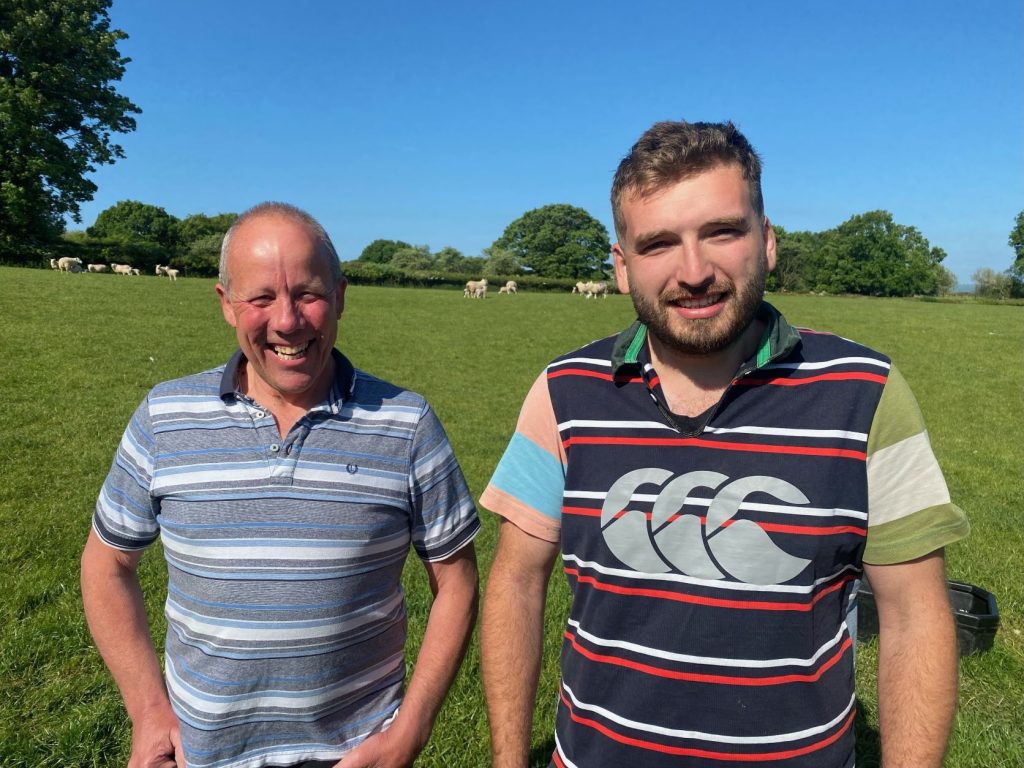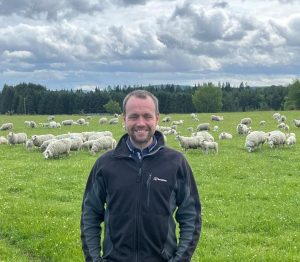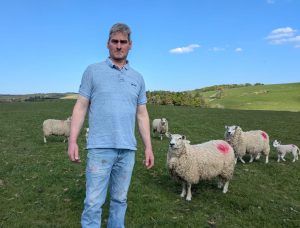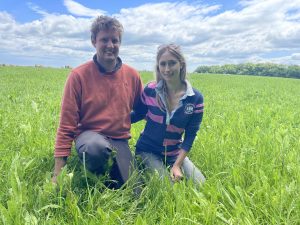with thanks to Sean Jeffries and Ian Rickman, Gurnos, Llandeilo
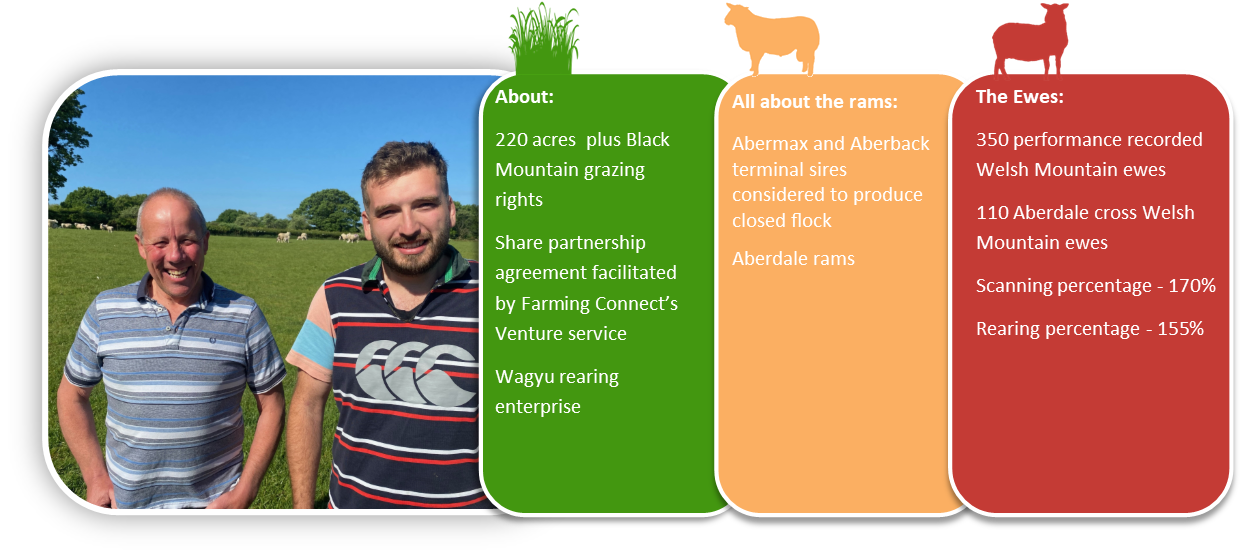
Expanding the sheep enterprise by at least 50% with performance recorded improved Welsh ewes and Innovis genetics is the way to way at Gurnos, near Llandeilo, Carmarthenshire where FUW deputy president, Ian Rickman and new entrant, Sean Jeffreys are developing their new partnership agreement facilitated by Farming Connect’s Venture service. Introducing rotational grazing, mixed species leys and forage crops, along with fully utilising the unit’s Black Mountain grazing rights are all scheduled to enable their plans to become a reality along with expanding the area farmed, minimising concentrate fed and a move towards outdoor lambing.
“We both share the same vision for this hill unit – sustainable and profitable lamb production from a low input medium output forage-based system,” Ian explains. “We believe there’s potential to expand both our pure upland flock of performance recorded Welsh Mountain and Aberdale cross flock up to 750 ewes in total by increasing the unit’s efficiency while making some smart environmental and biodiversity gains.
“Exploiting the farm’s real potential has been a real struggle with my FUW work taking me away from the farm for two to three days a week and I didn’t want to start winding down the business and cutting back on numbers. It’s great to have Sean on board in this new joint venture which features a 50 50 cost profit share agreement.”
Sean continues: “The partnership comes with the bonus of having a farming mentor – Ian has four decades years of rich hands-on experience, while it is providing me with a fantastic opportunity to put my first major step on the ladder.” It was Sean’s grandparent’s smallholding carrying a Badger Face Welsh Mountain flock that initially inspired his farming career which eventually led him to study at Harper Adams University and start building his own flock.
The flock’s development plans are already underway. “We’ve taken the decision to build a closed flock of Aberdale cross Welsh Mountain ewes and breed them to either Abermax or Aberblack meat sires for finished lamb production. I considered the ewe lambs were sufficiently big and strong enough to breed from at 42kg and approximately six to seven months of age, 32 produced 49 live lambs with only one requiring assistance to suck,” Sean explains “There’s another 78 ewe lambs scheduled to breed from next season.”
The Aberdale has been tried and tested on the unit since 2007; in fact, Ian was amongst the Welsh producers to pioneer farming Innovis genetics. “When something new comes along, then the only way to embrace it is to try it, so we swapped a Continental ram for the Aberdale in an attempt to add value to our Welsh flock. These ewes have scanned an average 170% and reared 155%. While the Aberdale cross Welsh wether lambs more than matched the Continental crosses finishing off grass to a targeted 44kgs, we received a premium of up to 15% for the ewe lambs sold for breeding purposes.”
Sean continues: “With so many years of Innovis experience at Gurnos, we have faith in the brand. It’s genuine, and the genetics have all been bred for the right reasons – under huge selection pressure and forced to work hard on forage-based systems. There’s also been a focus on selecting for traits that influence profitability. Consequently, I know that rams and ewes can perform in those low input systems, and I’m confident their lambs can too. Innovis genetics offer that additional assurance when we’re working towards a closed flock since they’ve all been screened for iceberg diseases.”
Sean is also bringing the Welsh Mountain flock’s genetics under the microscope. “We’re planning to select a smaller more efficient ewe, reducing average mature body weight from the 60kg to 65kg mark to an average 55kg which in turn will help us to increase stocking rate.”
He adds: “We reckon it’s going to take up to four years for the incremental gains to pull through. We’ve established a base line, while measuring, monitoring and benchmarking will enable us to chart the developments and progress, and I’m fortunate to have Ian who is always around for help and guidance.”
